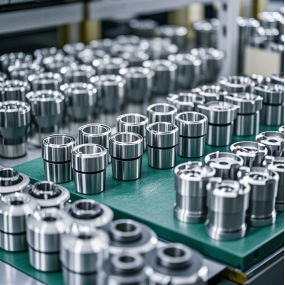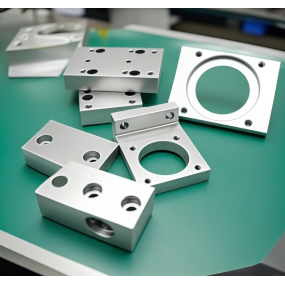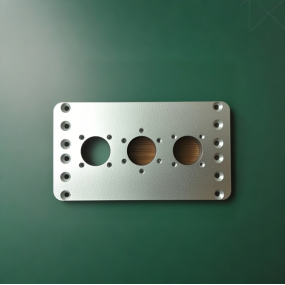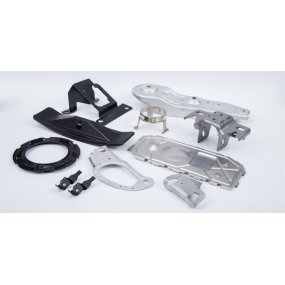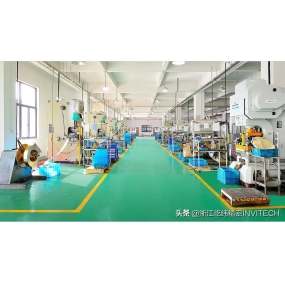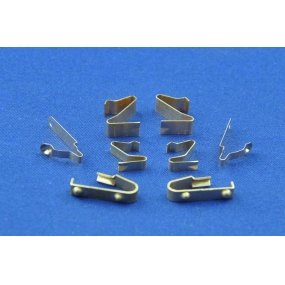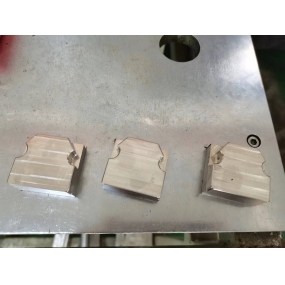The standards for the design and structure of titanium alloy parts involve many aspects, including material standards, processing standards, heat treatment standards, and industry standards for specific application fields. The following are some of the main standards and considerations:  I. Material standards Chemical composition: The chemical composition of titanium alloy parts needs to meet relevant standards, such as GB/T 3620.1-2011 "Chemical analysis methods for casting alloys - Part 1: Common metal elements", etc. These standards specify the content range of various elements in titanium alloys to ensure stable performance of materials. Grades and classification: The design of titanium alloy parts needs to be carried out according to specific grades. Different grades of titanium alloys have different mechanical properties and chemical properties and are suitable for different application scenarios. II. Machining Standard Dimensions and Tolerances: The dimensions and tolerances of titanium alloy parts need to meet the design requirements and relevant standards, such as GB/T 1804-2000 "General Tolerances, Tolerances for Linear and Angular Dimensions without Tolerances", etc., to ensure the interchangeability and assembly accuracy of parts. Surface Quality: The surface quality of titanium alloy parts is also an important factor to be considered when designing, including surface roughness, surface defects, etc., which will affect the performance and life of parts. III. Heat Treatment Standard Titanium alloy parts may need to be heat treated during processing to improve their mechanical properties and microstructure. Heat treatment standards include heating temperature, holding time, cooling methods, etc. These parameters need to be selected and optimized according to specific material and part requirements. Industry standards for specific application fields In aerospace, chemical, military and other specific application fields, the design of titanium alloy parts also needs to meet the corresponding industry standards. These standards usually have stricter requirements on the chemical composition, mechanical properties, corrosion resistance, fatigue life and other aspects of the parts. For example, AMS 4928R-2014 "Titanium Alloy, Castings, 6Al - 24.5Fe - 1.5Mo Solution and Precipitation Heat Treated" and other standards specify detailed requirements for specific types of titanium alloy castings. V. Design structure standards When designing the structure of titanium alloy parts, the following factors should also be considered: Strength and stiffness: According to the use requirements of the parts, the cross-sectional shape and size should be reasonably designed to ensure that the parts have sufficient strength and stiffness. Lightweight: Titanium alloys have the characteristics of low density and high specific strength, so this advantage should be fully utilized in the design to achieve the lightweight of the parts. Processability: Consider the processing technicality of the parts and avoid designing structures that are too complex or difficult to process, so as to reduce manufacturing costs and improve production efficiency. Reliability: Ensure that the parts can work stably and reliably during use, and avoid failures or failures caused by design defects.
I. Material standards Chemical composition: The chemical composition of titanium alloy parts needs to meet relevant standards, such as GB/T 3620.1-2011 "Chemical analysis methods for casting alloys - Part 1: Common metal elements", etc. These standards specify the content range of various elements in titanium alloys to ensure stable performance of materials. Grades and classification: The design of titanium alloy parts needs to be carried out according to specific grades. Different grades of titanium alloys have different mechanical properties and chemical properties and are suitable for different application scenarios. II. Machining Standard Dimensions and Tolerances: The dimensions and tolerances of titanium alloy parts need to meet the design requirements and relevant standards, such as GB/T 1804-2000 "General Tolerances, Tolerances for Linear and Angular Dimensions without Tolerances", etc., to ensure the interchangeability and assembly accuracy of parts. Surface Quality: The surface quality of titanium alloy parts is also an important factor to be considered when designing, including surface roughness, surface defects, etc., which will affect the performance and life of parts. III. Heat Treatment Standard Titanium alloy parts may need to be heat treated during processing to improve their mechanical properties and microstructure. Heat treatment standards include heating temperature, holding time, cooling methods, etc. These parameters need to be selected and optimized according to specific material and part requirements. Industry standards for specific application fields In aerospace, chemical, military and other specific application fields, the design of titanium alloy parts also needs to meet the corresponding industry standards. These standards usually have stricter requirements on the chemical composition, mechanical properties, corrosion resistance, fatigue life and other aspects of the parts. For example, AMS 4928R-2014 "Titanium Alloy, Castings, 6Al - 24.5Fe - 1.5Mo Solution and Precipitation Heat Treated" and other standards specify detailed requirements for specific types of titanium alloy castings. V. Design structure standards When designing the structure of titanium alloy parts, the following factors should also be considered: Strength and stiffness: According to the use requirements of the parts, the cross-sectional shape and size should be reasonably designed to ensure that the parts have sufficient strength and stiffness. Lightweight: Titanium alloys have the characteristics of low density and high specific strength, so this advantage should be fully utilized in the design to achieve the lightweight of the parts. Processability: Consider the processing technicality of the parts and avoid designing structures that are too complex or difficult to process, so as to reduce manufacturing costs and improve production efficiency. Reliability: Ensure that the parts can work stably and reliably during use, and avoid failures or failures caused by design defects.
Hello! Welcome to EMAR's website!
 English
English » »
» »
 Spanish
Spanish Arabic
Arabic French
French Portuguese
Portuguese Belarusian
Belarusian Japanese
Japanese Russian
Russian Malay
Malay Icelandic
Icelandic Bulgarian
Bulgarian Azerbaijani
Azerbaijani Estonian
Estonian Irish
Irish Polish
Polish Persian
Persian Boolean
Boolean Danish
Danish German
German Filipino
Filipino Finnish
Finnish Korean
Korean Dutch
Dutch Galician
Galician Catalan
Catalan Czech
Czech Croatian
Croatian Latin
Latin Latvian
Latvian Romanian
Romanian Maltese
Maltese Macedonian
Macedonian Norwegian
Norwegian Swedish
Swedish Serbian
Serbian Slovak
Slovak Slovenian
Slovenian Swahili
Swahili Thai
Thai Turkish
Turkish Welsh
Welsh Urdu
Urdu Ukrainian
Ukrainian Greek
Greek Hungarian
Hungarian Italian
Italian Yiddish
Yiddish Indonesian
Indonesian Vietnamese
Vietnamese Haitian Creole
Haitian Creole Spanish Basque
Spanish Basque


